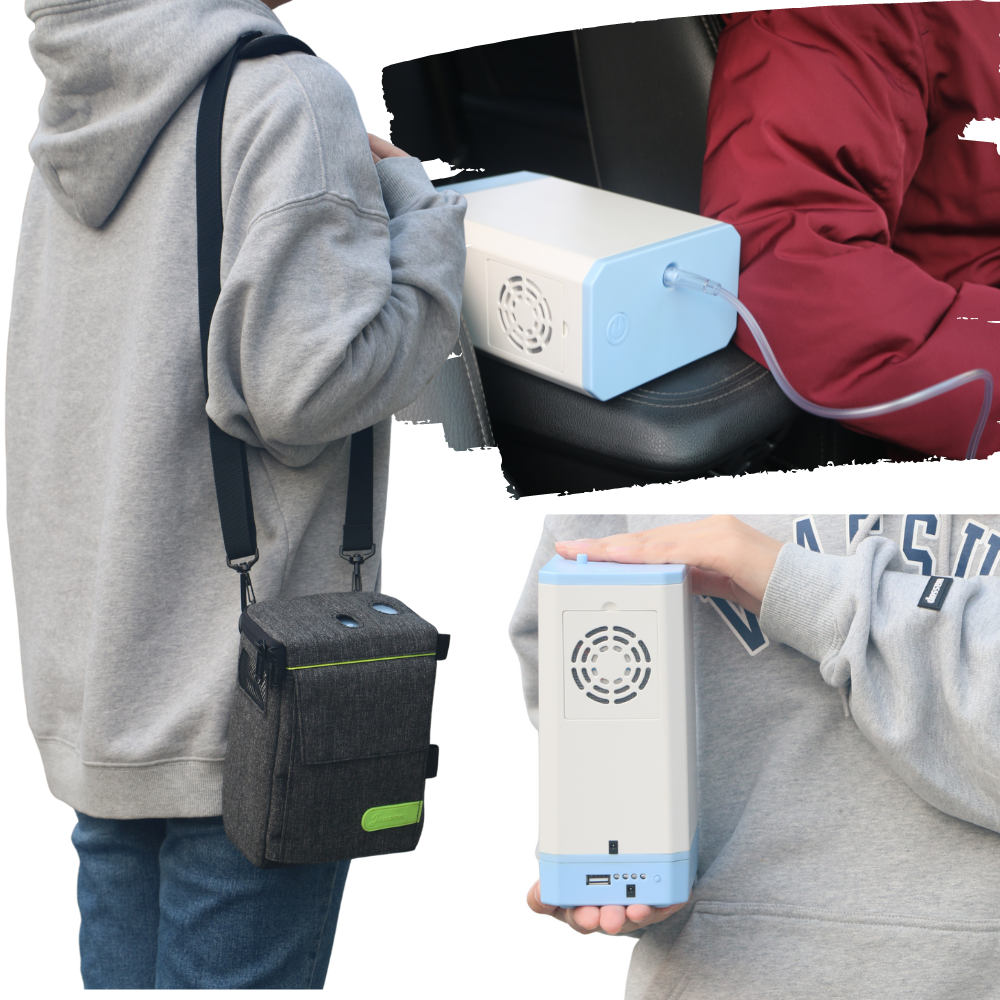Portable Oxygen Concentrators for Beginners
Table of ContentsMore About Portable Oxygen ConcentratorsPortable Oxygen Concentrators - QuestionsThe Buzz on Portable Oxygen ConcentratorsThe 8-Minute Rule for Portable Oxygen Concentrators
Fixed oxygen concentrators were once the standard, but these tanks can weigh 50 extra pounds and were very troublesome (Portable Oxygen Concentrators). Now, mobile oxygen concentrators do the job, and they can suit a handbag or purse! The only point you ought to maintain in mind is that portable concentrators have much more limited oxygen delivery capabilitiesThere are two major kinds of mobile oxygen concentrators: pulse dosage and continuous circulation. As the name recommends, pulse dose concentrators supply oxygen intermittently, just turning on when you inhale. This kind of gadget is normally recommended for COPD people with restricted oxygen demands, as the amount of O2 that a pulse dose concentrator can deliver is relatively reduced.
This device can deliver up to 3,000 m, L of oxygen every minute, while pulse dosage tools have a tendency to cover out at 1250 m, L. Constant circulation gadgets are the go-to for most COPD clients, as they're excellent for people that require two to 5 liters of oxygen a minute.
Now that you have this guide to the different types of mobile oxygen machines, choose the best gadget with the help of your doctor.
The 4-Minute Rule for Portable Oxygen Concentrators
We questioned how well these mobile oxygen concentrators would work in health centers. POC concentrators increase the percentage of oxygen in ambient air individuals breathe in, whenever they need a boost.
When it comes to mobile oxygen treatment, there are two main alternatives for distribution. These are portable oxygen cylinders which contain pressed oxygen gas, or oxygen concentrators, which use a battery powered system to press and filter air, in order to develop a constant supply of concentrated oxygen. In this message, AMS Composite Cylinders Technical Supervisor, Tony Morrin, compares both, looking at the pros and cons of each oxygen delivery system for NHS medical oxygen users in regards to patient freedom.

Mobile Oxygen Concentrator Oxygen pureness is regularly greater when supplied from cyndrical tubes it never goes down below 99. 6%, no matter of the circulation rate required. In battery-powered concentrators, purity is impacted by flow price, and might be 90% or less, relying on the equipment. Whilst oxygen concentrators can be beneficial for people that require a lower flow of oxygen, cylinders offer higher focus that can be more appropriate for people with high flow demands.
Rumored Buzz on Portable Oxygen Concentrators
Both systems need the client to lug around devices. For cylinders, this will certainly include bring a bag (and periodically a trolley) and for mobile oxygen concentrators this will certainly include the bag, cart and power charger. Weight sensible, mobile oxygen concentrators can be comparable in weight, or in some cases, lighter than typical aluminium cyndrical tube systems.
They will certainly need to boost considerably if they are to supply the very same level of performance as comparable composite cylinders. Oxygen always brings a safety and security threat. On one hand, need to cylinders spring a leak, they can develop an oxygen rich environment that might lead to a rise in fire risk.

The difference is that there are significant ahead of time prices to acquiring a portable oxygen concentrator, however lower running expenses utilizing cyndrical tubes allows the buyer to spread the expense over an extensive amount of time. One small disadvantage of a mobile oxygen concentrator is the noise mobile systems make a substantial amount of sound throughout operation, which Homepage numerous individuals discover disruptive.
The 20-Second Trick For Portable Oxygen Concentrators

Our high-grade carbon composite cylinders provide high pressure (300 Bar), low weight, and NLL (Non-Limited Life) efficiency, and are accredited for usage worldwide. Additional information about AMS Compound Cylinders Ltd can be discovered at .
Oxygen concentrators are designed with individual wheelchair in mind. Whether it's a desktop computer variation for home use or a smaller, lightweight model for on-the-go, these tools enable individuals to relocate easily without being tethered to a fixed device. Particularly for the ones especially made for transportability, people can lug them around, assisting in traveling and everyday tasks easily.
Among the significant comforts of using an oxygen concentrator is the removal of the regular demand to replenish oxygen containers. This not only lowers the logistical difficulties and frequent expenses linked with refills but also guarantees that the user has a much more predictable and stable source of oxygen. Oxygen reference concentrators are designed to fit flawlessly into the home setting.